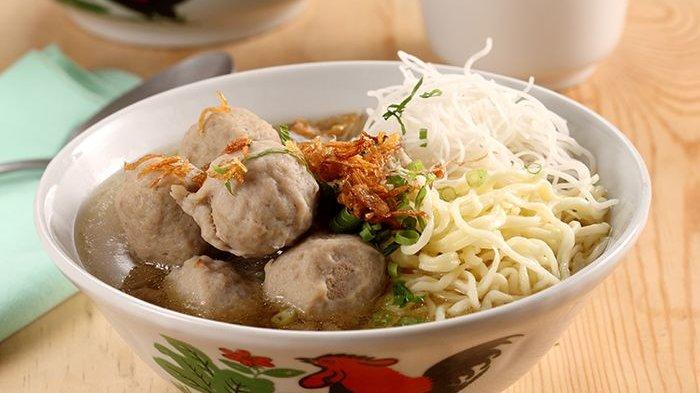he sight of a bakso cart—often a wheeled wooden stall with steaming pots, a cheerful vendor (Abang-Abang), and the clatter of bowls—is one of the most comforting scenes in Indonesian street life. Bakso, the nation’s beloved meatball soup, is far more than a simple dish; it is a universal comfort food, a testament to culinary resourcefulness, and a delicious reflection of Indonesia’s diverse gastronomic landscape.
The Anatomy of the Bakso Meatball
The heart of the dish lies in its signature dense yet springy meatballs. Unlike the softer, breadcrumb-laden meatballs of Italian cuisine, bakso are dense and possess an addictive, slight ‘bounce.’
- Composition: They are typically crafted from finely ground beef, meticulously mixed with a small amount of tapioca starch (or sometimes sago) and a simple blend of seasonings like garlic, salt, and pepper. This unique combination and a thorough kneading process are what give bakso its characteristic chewy, firm texture, known in Indonesian as “kenyal.”
- The Variations: While beef is the standard, bakso comes in endless variations. You might find bakso urat (meatballs mixed with tendons for a satisfying chew), bakso keju (cheese-filled), bakso pedas (chili-filled), or even bakso ikan (fish bakso). Some vendors specialize in enormous, “super-sized” bakso that are a meal in themselves.

The Symphony in the Bowl
The meatball, however, is only one component of this flavorful soup. A bowl of bakso is a carefully orchestrated medley of textures and fresh flavors, all brought together by a clear, savory broth.
- The Broth: The foundation is a rich, clear beef broth, slow-simmered with bones, a light touch of garlic, shallots, and white pepper. It’s the perfect savory, warming base for the ingredients.
- The Fillings: The soup is loaded with complementary additions that offer textural contrast:
- Noodles: A mix of rice vermicelli (bihun) and/or chewy yellow noodles.
- Greens: Blanched mustard greens and fresh bean sprouts.
- Tofu: Pieces of soft tofu, often fried beforehand, soak up the broth’s flavor.
- Pangsit Goreng: Crispy fried wontons, offering a delightful crunch.
- The Garnishes: The final flourish elevates the simple soup to a rich meal: a generous sprinkling of fried shallots for aroma and crispness, and finely chopped celery or scallions.
Customizing Your Comfort
Perhaps the most engaging part of eating bakso is the freedom of customization. Every bowl is a blank canvas for the diner, allowing them to tailor the flavor profile to their exact preference.
At your table or the vendor’s cart, you’ll find a line-up of condiments ready to transform your meal:
- Sambal: A spoonful (or three!) of chili paste to inject a fiery heat.
- Kecap Manis: A sweet, thick soy sauce to add depth and a hint of caramel flavor.
- Cuka: Vinegar to provide a balancing tanginess and acidity.
By adjusting these key elements, each person can create a truly unique bowl of soup—ranging from light and aromatic to intensely spicy and rich.
Cultural Significance
For Indonesians, bakso is a truly democratic food. It is enjoyed by everyone, from school children to office workers, and is sold everywhere—from humble street carts to upscale restaurant chains. It’s the ultimate go-to meal for rain or shine, a warm and nourishing embrace that defines Indonesian comfort food.
The next time you’re craving something hearty, savory, and customizable, look no further than Bakso. It’s not just a meatball soup; it’s a taste of the archipelago’s heart.

Leave a Reply